#Susan Wise bauer
Text




1 note
·
View note
Text
Top Ten Longest Book's I've Read (updated version!) *not including omnibuses
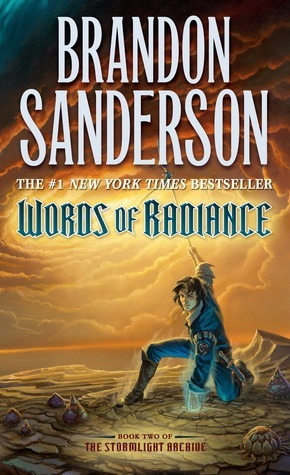
1,310
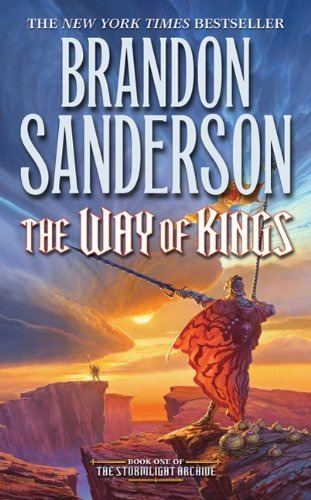
1,258

1,072
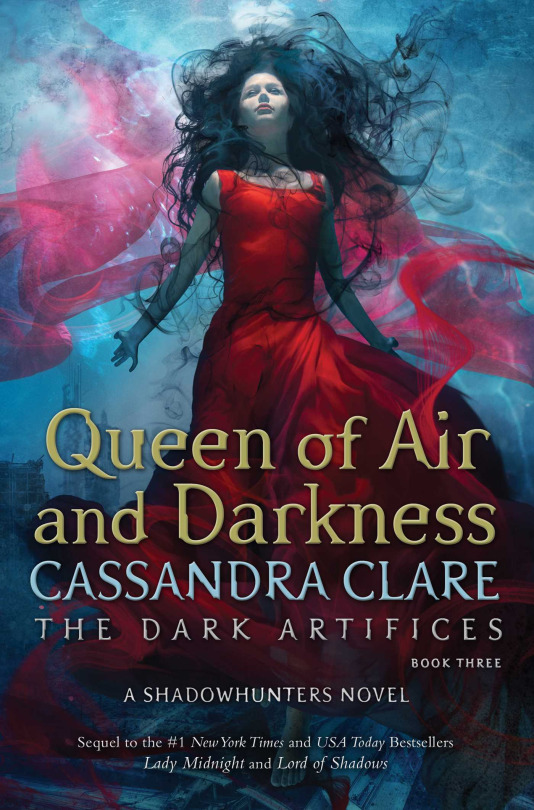
912
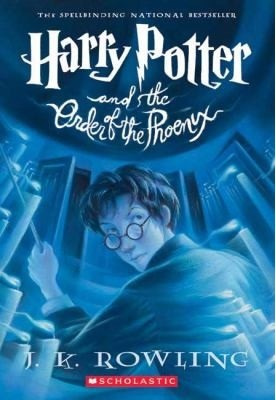
912
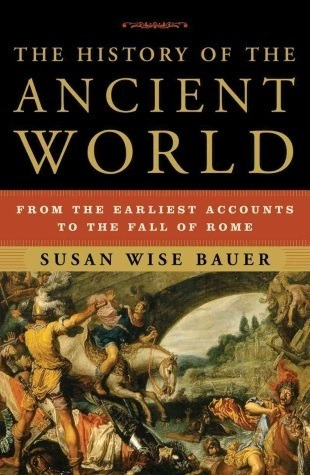
896
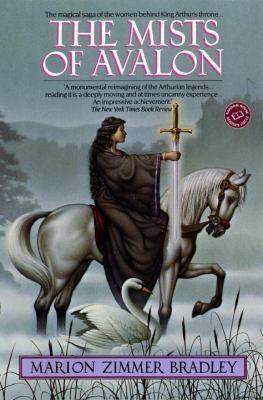
884

850

843
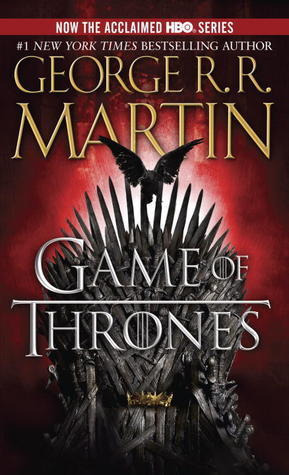
835
#Longest Books#Booklr#Word's of Radiance#Brandon Sanderson#The Way of Kings#Battlefield Earth#Queen of Air and Darkness#Cassandra Clare#Harry Potter and the Order of the Phoenix#The History of the Ancient World#Susan Wise Bauer#The Mists of Avalon#marion zimmer bradley#Outlander#Diana Gabaldon#Deadhouse Gates#Steven Erikson#Game of Thrones#george rr martin
1 note
·
View note
Text



#He got Banca Mediolanum'd#Susan Wise bauer#History of the Ancient World:From the Earliest Accounts to the Fall of Rome
0 notes
Text
I love reading my big book of all of ancient history for Kirby headcanon, cause sometimes I forget why I'm reading it and assume it'll solve minor headcanon issues because I read it not very often cause I'm bad at reading. I'm reading it for broad context on how ancient civilizations formed and evolved because I don't wanna just make Halcandra analogous with one culture (like basic ass Greece/Rome like canon is doing, or even for a while I was just gonna do Ancient Mesopotamia), but at the same time I already have lots of more specific headcanon I'm working on.
So I'm trying to design a dress for a character, and I'm at a loss cause I hate designing clothing. And I says to myself, "Ah I should be reading that big stupid book on ancient history. My avoidance of the research for Halcandra has gone on long enough." Then I read the book, and I am amazed by the very thoughtful and insightful knowledge I have now gained into human behavior and sociopolitical trends in war and mythology... and I still don't know what the dress should look like.
#shut the heck up#about hecks hecking life#kirby headcanons#literature#book is by this lady named susan wise bauer#obviously its just called like history of the ancient world
7 notes
·
View notes
Note
For a school assignment, I'm assembling an anthology around the theme of queer divinity and desire, but I'm having a hard time finding a fitting essay/article (no access to real academic catalogues :/ ), do you know of any essays around this theme?
below are essays, and then books, on queer theory (in which 'queer' has a different connotation than in regular speech) in the hebrew bible/ancient near east. if there is a particular prophet you want more of, or a particular topic (ištar, or penetration, or appetites), or if you want a pdf of anything, please let me know.
essays: Boer, Roland. “Too Many Dicks at the Writing Desk, or How to Organize a Prophetic Sausage-Fest.” TS 16, no. 1 (2010b): 95–108. Boer, Roland. “Yahweh as Top: A Lost Targum.” In Queer Commentary and the Hebrew Bible, edited by Ken Stone, 75–105. JSOTSup 334. Cleveland, OH: Pilgrim, 2001. Boyarin, Daniel. “Are There Any Jews in ‘The History of Sexuality’?” Journal of the History of Sexuality 5, no. 3 (1995): 333–55. Clines, David J. A. “He-Prophets: Masculinity as a Problem for the Hebrew Prophets and Their Interpreters.” In Sense and Sensitivity: Essays on Reading the Bible in Memory of Robert Carroll, edited by Robert P. Carroll, Alastair G. Hunter, and Philip R. Davies, 311–27. JSOTSup 348. Sheffield: Sheffield Academic Press, 2002. Graybill, Rhiannon. “Yahweh as Maternal Vampire in Second Isaiah: Reading from Violence to Fluid Possibility with Luce Irigaray.” Journal of feminist studies in religion 33, no. 1 (2017): 9–25. Haddox, Susan E. “Engaging Images in the Prophets: Feminist Scholarship on the Book of the Twelve.” In Feminist Interpretation of the Hebrew Bible in Retrospect. 1. Biblical Books, edited by Susanne Scholz, 170–91. RRBS 5. Sheffield: Sheffield Phoenix Press, 2013. Koch, Timothy R. “Cruising as Methodology: Homoeroticism and the Scriptures.” In Queer Commentary and the Hebrew Bible, edited by Ken Stone, 169–80. JSOTSup 334. Cleveland, OH: Pilgrim, 2001. Tigay, Jeffrey. “‘ Heavy of Mouth’ and ‘Heavy of Tongue’: On Moses’ Speech Difficulty.” BASOR, no. 231 (October 1978): 57–67.
books: Ahmed, Sara. Queer Phenomenology: Orientations, Objects, Others. Durham, NC: Duke University Press, 2006. Bauer-Levesque, Angela. Gender in the Book of Jeremiah: A Feminist-Literary Reading. SiBL 5. New York: P. Lang, 1999. Black, Fiona C., and Jennifer L. Koosed, eds. Reading with Feeling : Affect Theory and the Bible. Atlanta, GA: SBL Press, 2019. Brenner, Athalya. The Intercourse of Knowledge: On Gendering Desire and “Sexuality” in the Hebrew Bible. BIS 26. Leiden: Brill, 1997. Camp, Claudia V. Wise, Strange, and Holy: The Strange Woman and the Making of the Bible. JSOTSup 320. Gender, Culture, Theory 9. Sheffield: Sheffield Academic Press, 2000. Chapman, Cynthia R. The Gendered Language of Warfare in the Israelite-Assyrian Encounter. HSM 62. Winona Lake, IN: Eisenbrauns, 2004. Creang��, Ovidiu, ed. Men and Masculinity in the Hebrew Bible and Beyond. BMW 33. Sheffield: Sheffield Phoenix Press, 2010. Eilberg-Schwartz, Howard. God’s Phallus: And Other Problems for Men and Monotheism. Boston: Beacon, 1995. Huber, Lynn R., and Rhiannon Graybill, eds. The Bible, Gender, and Sexuality : Critical Readings. London, UK ; T&T Clark, 2021. Guest, Deryn. When Deborah Met Jael: Lesbian Biblical Hermeneutics. London: SCM, 2005. Graybill, Rhiannon, Meredith Minister, and Beatrice J. W. Lawrence, eds. Rape Culture and Religious Studies : Critical and Pedagogical Engagements. Lanham, Maryland: Lexington Books, 2019. Graybill, Rhiannon. Are We Not Men? : Unstable Masculinity in the Hebrew Prophets. New York, NY: Oxford University Press USA, 2016. Halperin, David J. Seeking Ezekiel: Text and Psychology. University Park: Pennsylvania State University Press, 1993. Jennings, Theodore W. Jacob’s Wound: Homoerotic Narrative in the Literature of Ancient Israel. New York: Continuum, 2005. Macwilliam, Stuart. Queer Theory and the Prophetic Marriage Metaphor in the Hebrew Bible. BibleWorld. Sheffield and Oakville, CT: Equinox, 2011. Maier, Christl. Daughter Zion, Mother Zion: Gender, Space, and the Sacred in Ancient Israel. Minneapolis, MN: Fortress, 2008. Mills, Mary E. Alterity, Pain, and Suffering in Isaiah, Jeremiah, and Ezekiel. LHB/OTS 479. New York: T. & T. Clark, 2007. Stökl, Jonathan, and Corrine L. Carvalho. Prophets Male and Female: Gender and Prophecy in the Hebrew Bible, the Eastern Mediterranean, and the Ancient Near East. AIL 15. Atlanta, GA: SBL, 2013. Stone, Ken. Practicing Safer Texts: Food, Sex and Bible in Queer Perspective. Queering Theology Series. London: T & T Clark International, 2004. Weems, Renita J. Battered Love: Marriage, Sex, and Violence in the Hebrew Prophets. OBT. Minneapolis, MN: Fortress, 1995.
92 notes
·
View notes
Text
The case for horror novels put forward by Susan Wise Bauer, beginning by criticizing Elaine Pagels' "The Origin of Satan"



65 notes
·
View notes
Photo

The History of the Ancient World: From the Earliest Accounts to the Fall of Rome
This comprehensive and engaging narrative covers many ancient civilizations, including Mesopotamia, Egypt, the Indus Valley, early China, Greece, and Rome. Bauer's accessible writing and use of primary sources make complex historical events understandable and interesting. Ideal for history enthusiasts and general readers, this book offers a balanced and detailed overview of ancient history.
The History of the Ancient World: From the Earliest Accounts to the Fall of Rome by Susan Wise Bauer is a sweeping and well-researched work that endeavours to present a coherent narrative of ancient history from its earliest beginnings to the fall of the Roman Empire. Bauer, a historian and seasoned author, undertakes the formidable task of chronicling the development of human civilisations across the globe, weaving together historical events, cultural evolutions, and significant personalities.
The book is organised into 70 chapters, each serving as a vignette illuminating specific eras, events, and figures in ancient history. Bauer's narrative is both chronological and thematic, a dual approach that allows readers to follow the progression of historical events while also understanding each period's broader cultural and societal developments.
Bauer begins her journey in Mesopotamia, exploring the rise and fall of ancient societies such as Sumer, Akkad, Babylon, and Assyria. She delves deeply into the development of writing with cuneiform, the establishment of legal codes exemplified by Hammurabi's Code, and the growth of urbanization and statecraft under rulers like Sargon of Akkad. Her detailed descriptions provide a vivid picture of how these early societies laid the groundwork for future civilisations.
The narrative then shifts to ancient Egypt, where Bauer traces the history from the early dynastic periods through the heights of the Old, Middle, and New Kingdoms. Her portrayal of Egyptian pharaohs such as Ramses II and Cleopatra pays particular attention to the complexities of their reigns. Bauer's exploration of Egyptian religion, monumental architecture like the pyramids and the temples at Karnak, and the daily life of its people enriches the reader's understanding of this ancient culture.
Bauer also examines the ancient civilizations of the Indus Valley and China. She discusses the sophisticated urban planning and social organization of the Harappan culture, as well as the early Chinese dynasties of Shang and Zhou, highlighting their contributions to writing, philosophy, and governance. Bauer's ability to interweave these diverse cultures into a single narrative thread is a testament to her skill as a historian and storyteller.
The book provides an in-depth look into ancient Greece and the Roman Republic and Empire. Bauer details impactful philosophers like Socrates, Plato, and Aristotle, military and political exploits executed by figures like Alexander the Great, the legacies of Julius Caesar and Constantine, and many other topics. Readers should pay attention to the discussion on the administrative and military structures that enabled Rome to maintain its dominance and its defining cultural and technological innovations. Bauer then concludes with the fall of Rome, marking the end of ancient history as traditionally defined and setting the stage for the medieval period.
Having published over six books, Bauer's writing style and storytelling skills to cover such a large timeline are evident, making complex concepts understandable and lively to a broad audience without sacrificing depth or accuracy. Her narrative is richly detailed while avoiding overwhelming readers with excessive minutiae. The book is well-supported by maps, timelines, and illustrations that contextualize the narrative and provide visual aids. Bauer's use of primary sources and quotations adds depth to her account, bringing the voices of ancient peoples into the modern narrative.
However, the book's scope also presents challenges. Some readers may find certain sections too brief, as Bauer moves quickly through some significant events and figures to maintain the narrative's momentum. Despite her efforts to include non-Western civilisations, the book still feels like it leans heavily towards a Eurocentric perspective, particularly in its treatment of the later chapters on Greece and Rome.
Overall, The History of the Ancient World is an impressive and highly readable account of ancient history. Susan Wise Bauer's synthesis of a vast array of historical data into a coherent narrative is commendable. While the book's scope means that some areas are covered more briefly than others, it remains an invaluable resource for anyone interested in the history of the ancient world.
Continue reading...
35 notes
·
View notes
Text
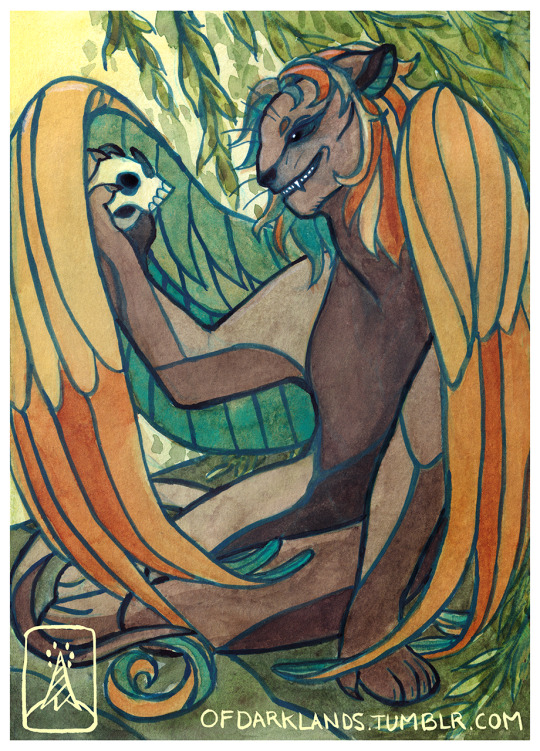
15 - Sphinx
In Greek tradition, the sphinx is a treacherous and merciless being with the head of a woman, the haunches of a lion, and the wings of a bird. According to Greek myth, she challenges those who encounter her to answer a riddle, and kills and eats them when they fail to do so. In Egyptian mythology, in contrast, the sphinx is typically depicted as a man (an androsphinx), and seen as benevolent, though with strength as ferocious as that of the Greek version. Both the Greek and Egyptian sphinxes were thought of as guardians, and statues of them often flank the entrances to temples.
The word sphinx comes from the Greek Σφίγξ, associated by folk etymology with the verb σφίγγω (sphíngō), meaning "to squeeze", "to tighten up". This name may be derived from the fact that lions kill their prey by strangulation, biting the throat of prey and holding them down until they die. However, the historian Susan Wise Bauer suggests that the word "sphinx" was instead a Greek corruption of the Egyptian name "shesepankh", which meant "living image", and referred rather to the statue of the sphinx, which was carved out of "living rock" (rock that was a contiguous part of the stony body of the Earth, shaped, but not cut away from its original source), than to the beast itself.
#inktober2023#my works#inktober#this fought me a little#face was a bit too close to the fursona style for my tastes but ah well#have a girl#doing girly things#love that sphinxes might be called Strangulator3000
47 notes
·
View notes
Note
how does someone learn how to read subtexts in childrens media (or anything tbh) though? im scared that im making a reach or downright misinterpreting stuff sometimes.
I think you start by reading history books!
My favorite author to catch you up to modern times is Susan Wise Bauer!
You start feeling a whole lot less afraid of SECRET MESSAGING AND SUBTEXT when you like. know whats going on and what has gone on.
13 notes
·
View notes
Text
" 'Some books are to be tasted,' wrote the sixteenth-century philosopher Francis Bacon, 'others to be swallowed, and some few to be chewed and digested.' Bacon...was suggesting that not every book is worthy of serious attention. But the three levels of understanding he describes -- tasting, swallowing, and digesting-- reflect his familiarity with classical education. In the classical school, learning is a three-part process. First, taste: Gain basic knowledge of your subject. Second, swallow: Take the knowledge into your own understanding by evaluating it. Is it valid? Is it true? Why? Third, digest: Fold the subject into your own understanding. Let it change the way you think -- or reject it as unworthy. Taste, swallow, digest; find out the facts, evaluate them, form your own opinion." ~ Susan Wise Bauer, "The Well-Educated Mind"
7 notes
·
View notes
Note
Book suggestions?
Hi !
I believe you need to read 3 types of books :
1. Books for your overall knowledge. Classics mostly, read The Secret History for a modern classic, The Picture of Dorian Gray, Tolstoi and Dostoievki books for a russian take, Kafka if you set yourself to, french ones as well like Maupassant or Victor Hugo... The list is very long but I think it's essential to read books that are well written by well-known writers to know what a good book is, it helps with critical thinking about other books.
2. Books for your soul. Read books that are easy to read, you like the plot, it makes you happy to read them, recreational books. I put here Agatha Christie's books, I liked A discovery of Witches' trilogy, but the list is up to you, it's your tastes. I also recommend to read one of these between "heavier" books like classics, because it "resets" a bit your mind.
3. Educational books. Basically, any non-fiction books, biographies to self help to history books. I heard that "The well educated mind" by Susan Wise Bauer is quite good, never had the chance to do so so far. You learn so much by reading these books, get topics that interest you of course and off you go. It's a good way to learn more about a certain topic without taking a class.
I would say that, whatever you read, read. Because reading is so much more than just that, it helps you with many many things like imagination, orthography, way of thinking, critical thinking....
Hope this helped!
6 notes
·
View notes
Text
Świetna książka
Polecamt tę książkę: THE WELL-TRAINED MIND A Guide to Classical Education at Home SUSAN WISE BAUER JESSIE WISE Przewodnik po edukacji klasycznej w domu Dobrze wyszkolony umysł to poradnik dla rodziców, jak samodzielnie przeprowadzić wszechstronną edukację - edukację klasyczną. Czym jest edukacja klasyczna? Jest intensywny językowo - nie skupia się na obrazach. Wymaga od uczniów używania i rozumienia słów mówionych i pisanych, a nie komunikowania się głównie za pomocą obrazów. Ma charakter historyczny, dzięki czemu uczniowie otrzymują wszechstronny obraz działalności człowieka od początku do dziś. Uczy umysł analizowania i wyciągania wniosków. Wymaga i rozwija samodyscyplinę - zdolność do podjęcia trudnego zadania, które nie przynosi natychmiastowej nagrody, w imię przyszłych korzyści. Daje uczniom umiejętność czytania i pisania, ciekawość, inteligencję, szeroki zakres zainteresowań i zdolność do ich rozwijania. Dobrze wyćwiczony umysł to podręcznik, który pomoże ci przygotować dziecko do czytania, pisania, liczenia, myślenia i rozumienia. W Prologu przedstawimy, czym jest edukacja klasyczna i opowiemy o naszych własnych doświadczeniach z edukacją klasyczną oraz z różnymi formami szkoły w domu. Część I mówi, jak stworzyć podstawy doskonałości akademickiej od przedszkola do czwartej klasy. W części II przedstawiono program, który pozwoli ćwiczyć dojrzewający umysł dziecka w gimnazjum (klasy 5-8). Część trzecia dotyczy umiejętności zdobytych w szkole średniej. Nawet jeśli zaczynasz pracę ze starszym dzieckiem, rozważ przeczytanie wcześniejszych części, aby zrozumieć podstawowe zasady edukacji klasycznej. Każda część zawiera podsumowanie dla poszczególnych klas, dzięki czemu można szybko zorientować się, co powinien zawierać każdy rok szkolny. Postępy w nauce, które opisujemy w częściach I-III, to model - ideał. Każdy ideał musi się zmienić (często w nieoczekiwany sposób), kiedy styka się z prawdziwymi ludźmi. Koniecznie przeczytaj rozdział 37, w którym omówiono krótko trudności w nauce i wskazano dodatkowe materiały Część IV jest poświęcona zagadnieniom związanym z edukacją domową w pełnym wymiarze godzin - rozpoczynaniu nauki, socjalizacji, ocenom i prowadzeniu dokumentacji, testom standardowym, aplikacjom na studia, sportowi i innym sprawom związanym z edukacją domową. Możesz zdecydować się na usunięcie dziecka ze szkoły lub pozostawienie go na zwykłych zajęciach. Tak czy inaczej, ta książka da ci narzędzia, których potrzebujesz, by uczyć je w domu lub uzupełniać i wzmacniać to, czego uczy się w klasie. Słyszeliśmy od rodziców z całego świata, którzy decydują się na "pozaszkolną" naukę swoich dzieci - indywidualną pracę z nimi wieczorami, w weekendy i w czasie wakacji, w celu wyrównania lub wzbogacenia ich edukacji w klasie. Jeśli chcesz, by twoje dziecko pozostało w szkole, ale miało dodatkowe zajęcia z gramatyki lub matematyki, możesz skorzystać z programów i metod, które proponujemy wieczorami lub podczas przerw. Jeśli twoje dziecko chce pogłębić wiedzę z historii lub nauk ścisłych, może samodzielnie realizować programy domowe, które przedstawiamy. Słowo o zasobach. Ogromne listy materiałów są dla nas przytłaczające. Kiedy Susan miała w domu czwórkę dzieci, nie chciała przeglądać obszernej listy polecanych książek, żeby znaleźć najlepszy przewodnik dla drugoklasistów po starożytnym Egipcie - wystarczyły jej dwie lub trzy najlepsze propozycje. Z tego powodu posortowaliśmy dostępne źródła i wymieniliśmy nasze najlepsze propozycje. Istnieje wiele książek, programów i materiałów, które są zgodne z celami edukacji klasycznej i nie staraliśmy się wymienić ich tutaj wszystkich. Materiały, które znalazły się w tej książce, to te, które łączą w sobie doskonałość naukową, łatwość użycia dla rodzica, przejrzystość i (jeśli to możliwe) przystępną cenę. Inne doskonałe programy mogą nie znaleźć się na liście, ponieważ powielają materiał zawarty w programie, który wymieniliśmy, ponieważ wydają się niepotrzebnie skomplikowane, zwłaszcza dla początkujących, ponieważ trudno je znaleźć lub ponieważ są (naszym zdaniem) zbyt drogie. Możesz jednak bez obaw zastępować je wszędzie tam, gdzie są potrzebne. Wiele z naszych rekomendacji zmieniało się z edycji na edycję. W niektórych przypadkach książki i programy po prostu wyszły z druku, co zmusiło nas do znalezienia nowych tytułów na ich miejsce. Jednak w wielu przypadkach powstały nowe programy nauczania, które (naszym zdaniem) zastępują nasze wcześniejsze zalecenia. Na koniec odwiedź stronę welltrainedmind.com, na której zamieściliśmy dodatkowe strony z materiałami: programy nauczania dla dzieci, które nie pasują do tradycyjnego toku nauczania opisanego na tych stronach - ponieważ mają zaległości w nauce, borykają się z problemami w nauce lub po prostu inaczej przetwarzają informacje; stale aktualizowana lista popularnych aplikacji, internetowych gier edukacyjnych i zajęć dodatkowych; alternatywne programy nauczania, które uznaliśmy za zbyt skomplikowane, drogie, specjalistyczne lub dziwaczne, by polecać je na tych stronach, ale które cieszą się entuzjastycznym poparciem wielu doświadczonych nauczycieli domowych. Na stronie forums.welltrainedmind.com możesz dołączyć do tysięcy rodziców zajmujących się nauczaniem domowym, którzy dyskutują o wyzwaniach związanych z nauką, dzielą się swoimi odkryciami dotyczącymi programów nauczania, wymieniają się wskazówkami dotyczącymi nauczania i wiele, wiele więcej.
Jeśli potrzebujesz pomocy w pisaniu prac, to zajrzyj na stronę www.pisanieprac.edu.pl
2 notes
·
View notes
Text
Rop 20 easy-to-read history books that are both informative and engaging:
### 1. **"Sapiens: A Brief History of Humankind" by Yuval Noah Harari**
- **Overview**: This global bestseller takes readers through the entire history of humankind, from the earliest humans to the present day. Harari explores how biology, history, and culture have shaped our societies, economies, and individual lives.
- **Why It's Easy to Read**: Harari's writing is clear and accessible, with a compelling narrative that simplifies complex ideas without oversimplifying them.
### 2. **"Guns, Germs, and Steel: The Fates of Human Societies" by Jared Diamond**
- **Overview**: Diamond examines the factors that influenced the development of civilizations across different continents, arguing that geography, biology, and environment played critical roles.
- **Why It's Easy to Read**: The book is well-structured and avoids jargon, making it easy to follow for readers without a background in history or anthropology.
### 3. **"A Short History of Nearly Everything" by Bill Bryson**
- **Overview**: This book is a journey through time, exploring the history of science and the universe. Bryson covers a wide range of topics, including geology, chemistry, biology, and physics, in an engaging and humorous way.
- **Why It's Easy to Read**: Bryson's conversational tone and ability to explain complex scientific concepts in simple terms make this an enjoyable read.
### 4. **"The Wright Brothers" by David McCullough**
- **Overview**: This biography of Wilbur and Orville Wright tells the inspiring story of the brothers who pioneered human flight. McCullough explores their lives, challenges, and the impact of their invention on the world.
- **Why It's Easy to Read**: McCullough is known for his narrative style that reads almost like a novel, making history accessible and engaging.
### 5. **"The Guns of August" by Barbara W. Tuchman**
- **Overview**: Tuchman chronicles the events leading up to and the first month of World War I, highlighting the decisions and misunderstandings that led to one of the most devastating conflicts in history.
- **Why It's Easy to Read**: Tuchman’s vivid storytelling and focus on personal perspectives make this complex historical event relatable and understandable.
### 6. **"Team of Rivals: The Political Genius of Abraham Lincoln" by Doris Kearns Goodwin**
- **Overview**: This book explores Abraham Lincoln’s leadership during the Civil War, focusing on how he brought together a cabinet of rivals who helped him navigate the nation through its darkest times.
- **Why It's Easy to Read**: Goodwin’s detailed character studies and focus on human relationships make this more than just a political history—it’s a compelling narrative of leadership and resilience.
### 7. **"The History of the Ancient World: From the Earliest Accounts to the Fall of Rome" by Susan Wise Bauer**
- **Overview**: Bauer covers the major civilizations of the ancient world, including Mesopotamia, Egypt, Greece, and Rome. She presents a sweeping history that connects the rise and fall of these empires.
- **Why It's Easy to Read**: The book is organized in a chronological, story-like format with clear, straightforward language that makes ancient history accessible to all readers.
### 8. **"The Devil in the White City: Murder, Magic, and Madness at the Fair That Changed America" by Erik Larson**
- **Overview**: Set against the backdrop of the 1893 World's Fair in Chicago, this book intertwines the stories of the event’s visionary architect, Daniel Burnham, and one of America’s first serial killers, H.H. Holmes.
- **Why It's Easy to Read**: Larson’s narrative nonfiction style reads like a thriller, making this an engaging and fast-paced historical account.
### 9. **"A People's History of the United States" by Howard Zinn**
- **Overview**: Zinn presents American history from the perspective of marginalized groups, including Native Americans, African Americans, and the working class. This book challenges traditional narratives and offers a different view of U.S. history.
- **Why It's Easy to Read**: Zinn’s conversational tone and focus on storytelling make complex historical themes more digestible for the average reader.
### 10. **"The Immortal Life of Henrietta Lacks" by Rebecca Skloot**
- **Overview**: This book tells the story of Henrietta Lacks, a poor African-American woman whose cells were taken without her knowledge and became one of the most important tools in medicine. It explores the intersections of science, ethics, and race.
- **Why It's Easy to Read**: Skloot blends biography, science, and history in a narrative that’s both informative and emotionally compelling, making difficult topics accessible.
### 11. **"1776" by David McCullough**
- **Overview**: This book focuses on the year 1776, a pivotal time in American history, chronicling the events of the American Revolution. McCullough provides detailed accounts of key figures like George Washington and their struggles during this turbulent period.
- **Why It's Easy to Read**: McCullough’s engaging narrative style makes the complexities of the American Revolution accessible, bringing history to life with vivid descriptions and personal stories.
### 12. **"The Diary of a Young Girl" by Anne Frank**
- **Overview**: This world-famous diary was written by Anne Frank, a Jewish girl in hiding during the Nazi occupation of the Netherlands. It provides a personal and poignant view of the Holocaust and the impact of war on ordinary lives.
- **Why It's Easy to Read**: Written in a clear, simple style by a young girl, this diary offers an intimate and powerful perspective on history that resonates with readers of all ages.
### 13. **"Night" by Elie Wiesel**
- **Overview**: A memoir of Wiesel's experience in the Nazi concentration camps during the Holocaust, "Night" is a powerful, first-person account of survival and the loss of innocence.
- **Why It's Easy to Read**: Despite its difficult subject matter, the book’s brevity and straightforward narrative make it an accessible yet profound introduction to the horrors of the Holocaust.
### 14. **"The Radium Girls: The Dark Story of America's Shining Women" by Kate Moore**
- **Overview**: This book tells the true story of young women who worked with radium paint in the early 20th century and suffered horrific health effects as a result. It also covers their fight for justice, which led to significant changes in labor laws.
- **Why It's Easy to Read**: Moore’s narrative nonfiction style brings this historical event to life, making it both educational and engaging.
### 15. **"Longitude: The True Story of a Lone Genius Who Solved the Greatest Scientific Problem of His Time" by Dava Sobel**
- **Overview**: This book recounts the story of John Harrison, an 18th-century clockmaker who solved the problem of determining longitude at sea, revolutionizing navigation and saving countless lives.
- **Why It's Easy to Read**: Sobel’s clear, concise writing makes a complex scientific problem understandable, with a narrative that’s as thrilling as it is informative.
### 16. **"Stalingrad: The Fateful Siege: 1942–1943" by Antony Beevor**
- **Overview**: This book details the Battle of Stalingrad, one of the most significant and brutal battles of World War II. Beevor’s account is comprehensive, covering both the strategic and human aspects of the battle.
- **Why It's Easy to Read**: Beevor’s narrative style makes this detailed military history accessible, focusing on the human stories within the larger historical context.
### 17. **"The Boys in the Boat: Nine Americans and Their Epic Quest for Gold at the 1936 Berlin Olympics" by Daniel James Brown**
- **Overview**: This book tells the true story of the University of Washington's rowing team, who competed in the 1936 Olympics in Nazi Germany. It’s a tale of determination, teamwork, and overcoming adversity.
- **Why It's Easy to Read**: Brown’s storytelling is engaging and heartfelt, making this an inspiring read that’s both easy to follow and emotionally impactful.
### 18. **"The Rise and Fall of the Dinosaurs: A New History of a Lost World" by Steve Brusatte**
- **Overview**: Paleontologist Steve Brusatte provides a comprehensive yet accessible history of the dinosaurs, from their origins to their extinction. The book also delves into recent discoveries and what they tell us about these ancient creatures.
- **Why It's Easy to Read**: Brusatte’s enthusiasm for the subject is contagious, and he explains scientific concepts in a way that’s easy for non-experts to understand.
### 19. **"The Warmth of Other Suns: The Epic Story of America's Great Migration" by Isabel Wilkerson**
- **Overview**: This book tells the story of the Great Migration, the movement of millions of African Americans from the rural South to urban centers in the North and West between 1915 and 1970. Wilkerson focuses on the personal stories of three individuals to bring this historical event to life.
- **Why It's Easy to Read**: Wilkerson’s narrative is both powerful and accessible, blending historical research with compelling personal stories.
### 20. **"A Distant Mirror: The Calamitous 14th Century" by Barbara W. Tuchman**
- **Overview**: This book explores the 14th century, a time of turmoil in Europe, marked by the Black Death, the Hundred Years' War, and religious and social upheaval. Tuchman uses the life of the French nobleman Enguerrand de Coucy to weave together the events of the period.
- **Why It's Easy to Read**: Tuchman’s ability to make complex historical events relatable through storytelling makes this a captivating read, even for those new to medieval history.
These books offer a great introduction to various historical periods and events while being easy to read and enjoyable for beginners or anyone looking for a more engaging approach to history.
0 notes
Text

Oh really? I would have never guessed!

0 notes
Photo

Tiglat-Pileser I
Tiglat-Pileser I (que reinó de 1115-1076 a.C.), un rey asirio del periodo conocido como Imperio Medio, revitalizó la economía y el ejército que había estado sufriendo, más o menos, desde la muerte del rey Tukulti Ninurta I (1244-1208 a.C.). Los reyes de antaño como Adad-Nirari I, Salmanasar I y Tukulti Ninurta I habían expandido el imperio, desde la ciudad de Assur y llenaron las arcas con las riquezas de sus conquistas. Sin embargo, los reyes que le siguieron a Tukulti Ninurta I se habían contentado con mantener el imperio tal y como lo habían heredado, sin mejorarlo ni ampliar lo que habían heredado, con lo que fueron perdiendo territorios en manos de tribus invasoras o facciones rebeldes dentro del imperio. La historiadora Susan Wise Bauer comenta lo siguiente al respecto, "Tiglat-Pileser quería más. Fue el primer rey guerrero desde Salmanasar, ocho generaciones y cien años más tarde. Se volvió contra los invasores y usó sus ataques para conseguir más tierras. Y durante un breve periodo de tiempo, algo menos de cuarenta años, Asiria recuperó parte de su antiguo resplandor" (287). Hizo campaña ampliamente a lo largo de un reinado que inició con grandes proyectos de construcción, y avanzó el proceso de recopilar una colección de libros en la biblioteca de Assur reuniendo tablillas de cuneiforme procedentes de todo el imperio.
Sigue leyendo...
0 notes
Text
Confusing Coinage
I was just reading Susan Wise Bauer's excellent History of the Medieval World (awesome book for getting a sense of world history in this period, though a bit light on the world outside Eurasia) and I came across the story of one of the oddest artifacts I've ever heard of, a coin minted by King Offa, an 8th century British king (he ruled over the Mercians in a territory occupying most of modern England).
Now, this coin, according to the current theory, is the result of international trade. The British Isles began to grow more involved in international trade, a process helped along by the recent conversion of the isles to Christianity strengthening its ties to mainland Europe. As part of this growing trade, King Offa has a new line of royal coinage minted, modeled on one specific type of coins his nation has encountered. The minters copy the designs of these coins, including a beautiful pattern of whirls that decorates the coins— after all, these are real coins, said to come from some powerful, if distant, empire, and so how they minted coins must be how real nations do it, right?
When these coins were minted and circulated, they would have caused no small amount of confusion to any Arabic speakers who happened to see them. You see, the pretty swirls that King Offa had copied were not as decorative as he thought. Alongside the inscription "Offa Rex," "King Offa" in Latin, the coins read (in fairly butchered Arabic) "there is no God but Allah and Muhammad is his prophet." In a blunder that has probably perplexed modern historians more than Offa's contemporaries, Offa's royal mint seems to have entirely cribbed the design of an Abassid dinar, including the Islamic profession of faith.
Now, historians aren't 100% in agreement as to why this bizarre coin exists, but the idea that it is some kind of mistake is seen as the most likely explanation given the lack of evidence that the Mercians spontaneously converted to Islam. This explanation is supported by the fact that there are some pretty egregious mistakes in the Arabic. Apparently, it's fairly evident to anyone who can read Arabic (which I unfortunately cannot) that whoever made this coin had no idea what the heck they were writing and were just blindly copying the original Abassid dinar. And so, in what may be one of the strangest mistakes in the history of coinage, we find the coins of a medieval Christian king of the Mercians loudly proclaiming his belief in Muhammad
#history#archaeology#english history#world history#weird history#numismatics#I don't understand how tags work
0 notes